| | |
29 Letters
[Pascal Naji Zoghbi]
|
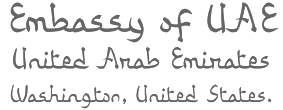 Madrid (and before that, Lebanon)-based Arabic type designer who runs the Arab type news and blog site called Arabic Typography. KHTT link. An ex-student of the KABK in 2006, he currently is a part time instructor of design and typography at Notre Dame University, Louaize, Lebanon, as well as a part time instructor of typography at the American University of Beirut (AUB), both since 2007. His Arabic type foundry is called 29letters.
Madrid (and before that, Lebanon)-based Arabic type designer who runs the Arab type news and blog site called Arabic Typography. KHTT link. An ex-student of the KABK in 2006, he currently is a part time instructor of design and typography at Notre Dame University, Louaize, Lebanon, as well as a part time instructor of typography at the American University of Beirut (AUB), both since 2007. His Arabic type foundry is called 29letters. At ATypI 2008 in St. Petersburg, he ran a workshop on the Arabic Kufi script. Speaker at ATypI 2010 in Dublin on the topic of political resistance and expression through graffiti in Lebanon and Palestine. His contributions to type design: - Massira. He has embarked on a project with Martin Majoor to design some Arabic fonts that fit Majoor's designs. He writes: Massira is my graduation typeface at Type&Media postgraduate course at The Royal Academy of Arts [KABK] in The Hague. Huda AbiFares contacted me while I was finalizing Massira and presented the opportunity to collaborate with the Dutch type designer Martin Majoor to design an Arabic typeface, which is part of the Typographic Matchmaking 01 project organized by Khatt Foundation. At first I was a bit worried due to the fact that it would be my first professional type design work and that the due date was too close. However, after taking a closer look at Martins type FFSeria and analyzing its characteristics, I noticed that the treatment of the stroke and the structure of the letters shared similarities with Massira. In both fonts the use of sharp broken curves and crispy feel is present. Consequently, I grew confident in project and decided to use Massira as a starting point for the new Arabic companion of FFSeria. Echo, which is Sada in Arabic, is the repetition of a sound caused by the reflection of sound waves from a surface. Accordingly, Sada is the echo of FFSeria. The modifications on Massira consisted of making Sada perform like FFSeria. It had to have the same point size, line space, color, contrast and feel as FFSeria. Concerning the details of Sada and the inclined angle of the vertical strokes, it was derived from the FFSeria Italic. So Sada has the same feel as the Roman but is inspired from the Italic. More on the Sada project. In 2009, Sada was renamed FF Seria and published by FontFont.
- Another project of Zoghbi involves a type family being developed for newspaper headlines.
- In 2007, he created a 3-style Phoenician type family called Fniqiya.
- Alef Pixel Caps Type for Alef Magazine (2008). Done with Huda AbiFares. This is a Latin ornamental type family.
- Al Rouiya Arabic Type for the Al Rouiah Newspaper in Kuwait, 2008.
- Bukra display type for Ibn Battuta Mall in Dubai, 2008. This Futura-like typeface saw a variable part added in 2020. Adrien Midzic and Swiss Typefaces aided with the Latin.
- A corporate font under the heading, Arabic for Univers (2008). Zoghbi: An Arabic corporate typeface for a global shipping and transport company. The Arabic is intended to work with the Latin type Univers. Unfortunately, I can't mention the name of the company nor the design firm I did this Arabic type work for. I was the Arabic type consultant/specialist and associate type designer alongside Leah Hoffmitz. The font will used in all Arabic publications, ads and packaging for the company.
- Baseet (2009) is a hybrid Neo-Naskh / Modern Kufi geometric typeface. It is a mixture of straight vertical, horizontal and diagonal pen stokes incorporated in-between curved corners and edges. In 2020, Pascal Zoghbi (29LT) and Ben Wittner released the monospaced Arabic / Latin typefaces 29 LT Baseet Variable and 28 LT Zawi Variable.
- At FontStruct, he made Arapix (2009).
- UAE Embassy Corporate Type (2010). This is a commissioned Latin typeface based on the same concept as of an Arabic font. Each of the 26 Latin letters has Caps, Initial, Medial and Final shape enabling the letters to connect as in the Arabic script. The drawing of the letters was all done using the Arabic calligraphic bamboo stick and based on the Naskh Calligraphic Style. Opentype help from Erik van Blokland.
- The Mathaf Corporate Arabic-Latin Font (2011). Mathaf Arab Museum of Modern Art opened its doors to contemporary Arab art lovers in December 2010 in Doha, Qatar.
- Nada Debs (2010): a contemporary geometric Kufi type commissionewd by Nada Debs.
- For Ascender, he did Droid Arabic Naskh (see OFL), Droid Persian Naskh, and Droid Arabic Kufi (2010, OFL).
- 29LT Azer, done with Ian Party and Wael Morcos: Azer in Arabic means friendly, ready to assist and lend a hand. This multilingual typeface combines simple lines with careful detailing to create a serious but approachable look. The Arabic is a Naskh / Kufi hybrid and retains a balance between calligraphic angular cuts and unadorned construction. The Latin is a humanist sans-serif with crisp cuts based on the broad nip pen calligraphic structure and contemporary outlines. The fonts include Arabic, Farsi, Urdu and Latin variants. Azer won an award at TDC 2014.
- Pascal Zoghbi revived the 1950s font system by Nasri Khattar called Unified Arabic as UA Neo B and UA Neo B.
- LT Makina. An old typewriter font.
- LT Kaff.
- LT Zarid (+Sans, +Stencil, +Slab, +Serif). Pascal Zoghbi designed all Arabic components. 29LT Zarid Display won an award at 23TDC in 2020. The whole family has variable styles since 2020. Jan Fromm designed the Latin for Slab, Sans and Stencil. Regarding the Latin parts: Zarid Serif Display and Text Upright were designed by Ramiro Espinoza; Serif Upright was designed by Ramiro Espinoza and Khajag Apelian; Serif Slanted and Text Slanted were designed by Jan Fromm. The Cyrillic and Greek extensions were designed by Krista Radoeva and released in July 2020. Finally, 20 LT Zarid Sans features a variable style with a single (weight) axis.
- LT Zeyn. A great high-contrast fashion mag style typeface.
- Other custom types include Expo 2020 Dubai, Swatch, Noor, MIA, Noto Naskh, Shawati, Hamsa, Fdx, Emirates Headlines, AlWatan Headlines.
Speaker at ATypI 2011 in Reykjavik. Speaker at ATypI 2013 in Amsterdam. Klingspor link. [Google]
[More] ⦿
|
Ajsa Zdrav
|
Dubai-based designer of the political protest font family Gaza (2015), with typefaces Gaza48, Gaza67 and Gaza14 representing the size of Palestine as it evolved from 1948 and 1967 to 2014. [Google]
[More] ⦿
|
Ajsa Zdravkovic
[PCRF Palestine Children's Relief Fund]
|
[More] ⦿
|
Aya Barqawi
|
Palestinian designer based in Amman, Jordan. She created the Latin typeface Jerusalem in 2015, which is inspired by the architecture of the city. As a student at German Jordanian University, she also created the Arabic typeface Morocco (2015). [Google]
[More] ⦿
|
Emad Fohid
[RTL Type (was: Black Tiger)]
|
[More] ⦿
|
Hasan Abu Afash
[Hiba Studio]

|
[MyFonts]
[More] ⦿
|
Hiba Studio
[Hasan Abu Afash]

|
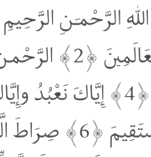 Arabic typography web site and font foundry established in 2007 by Hasan Abu Afash, an Arab designer living in Gaza/Palestine. Typefaces: HS Dream (2019), HS Gold (2018), HS Almisk, HS Almisk Serif (2018: modern kufi style), HS Aleman (2018: a kufi /naskh hybrid), HS Alnasma (2017), HS Alhoson (2017), HS Alwajd (2016), HS Almajd (2016), HS Rahaf (2015, covering Pashtu, Persian, Urdu, Kurdish Sorani, Kurdish Kirmanji, and Arabic), HS Alnada (2015, kufi), HS Headline (a fat calligraphic didone display typeface by Gunnlaugur Briem (Latin) and Hasan Abu Afash (Arabic, based on the simple lines of Naskh calligraphy), HS Ali (2015; designed using equal amounts of anger and sorrow, Hasan writes: HS Ali was designed in memoriam of my brother---Ali Abu Afash who was martyred during the last aggression on Gaza in summer 2014), HS Alhuda (2014, Kufi font), HS Almaha (2014: this font combines the features of linear Naskh and modern Kufi), HS Almidad (2014), HS Ishraq (2013), HS Alkitab (2013), HS Albadr (2013), HS Almohandis (2007-2011, Arabic display face), HS Alhandasi (2007 and 2011), Hasan AlQuds family (2004, a display typeface done with Mamoun Sakkal), Hasan Hiba, Hasan Enas (Arabic text typeface), Hasan Elham (2006, a modern Kufi art deco face), Hasan Ghada (2007-2008, based on modern Kufi calligraphy--first known in 2002 as KactTitle), Hasan Manal (2008, Kufi style), Hasan Aya (2007, Kufi style famaily based on Corel's 1992 typeface Bedrock), Kouffi Fatemic, Safwat, HS Amal. In 2008, Hasan Hiba and Hasan Noor (a classic squarish Kufi face) were upgraded to the DecoType font format for use in WinSoft Tasmeem which is now bundled with InDesign CS4---thanks to a cooperation with Mirjam Somers. Still with Somers, he upgraded the Basim Marah display typeface (2008) for Tasmeem. Basim Marah was drawn by Basim Salem Al Mahdi from Iraq and then digitized by Hasan himself. The same year, Hasan developed an OpenType project for Alinma TheSans fonts which are based on TheMix Arabic (designed by Luc(as) de Groot and Mouneer ElShaarani for Al Inma Bank, Saudi Arabia). Later he developed the OpenType features for Jumeirah Arabic which was designed by Pascal Zoghbi (29letters) and Huda AbiFares (Khatt) for Jumeirah International, UAE. He developed the OpenType layout features needed for the Arabic script system in the Seria Arabic fonts family which was designed by Pascal Zoghbi for FontShop International, as well as the Chams fonts family which was designed by Al Mohtaraf Assaudi for the redesign of the Shams Newspaper in Saudi Arabia and the Arajhi fonts for Alrajhi Bank. Since 2002 Hasan has worked and collaborated with Mamoun Sakkal in several projects, such as the Burj Dubai Shilia project, Sakkal Baseet and the Microsoft project which included the updating of the OpenType instructions for fonts such as Tahoma, Microsoft Sans Serif (1997), Arial, Times New Roman, Segoe, Courier, Time New Roman, Ms Uighur and Majalla UI. In 2009-2010, he cooperated with Parachute to make DIN Text Arabic.
Arabic typography web site and font foundry established in 2007 by Hasan Abu Afash, an Arab designer living in Gaza/Palestine. Typefaces: HS Dream (2019), HS Gold (2018), HS Almisk, HS Almisk Serif (2018: modern kufi style), HS Aleman (2018: a kufi /naskh hybrid), HS Alnasma (2017), HS Alhoson (2017), HS Alwajd (2016), HS Almajd (2016), HS Rahaf (2015, covering Pashtu, Persian, Urdu, Kurdish Sorani, Kurdish Kirmanji, and Arabic), HS Alnada (2015, kufi), HS Headline (a fat calligraphic didone display typeface by Gunnlaugur Briem (Latin) and Hasan Abu Afash (Arabic, based on the simple lines of Naskh calligraphy), HS Ali (2015; designed using equal amounts of anger and sorrow, Hasan writes: HS Ali was designed in memoriam of my brother---Ali Abu Afash who was martyred during the last aggression on Gaza in summer 2014), HS Alhuda (2014, Kufi font), HS Almaha (2014: this font combines the features of linear Naskh and modern Kufi), HS Almidad (2014), HS Ishraq (2013), HS Alkitab (2013), HS Albadr (2013), HS Almohandis (2007-2011, Arabic display face), HS Alhandasi (2007 and 2011), Hasan AlQuds family (2004, a display typeface done with Mamoun Sakkal), Hasan Hiba, Hasan Enas (Arabic text typeface), Hasan Elham (2006, a modern Kufi art deco face), Hasan Ghada (2007-2008, based on modern Kufi calligraphy--first known in 2002 as KactTitle), Hasan Manal (2008, Kufi style), Hasan Aya (2007, Kufi style famaily based on Corel's 1992 typeface Bedrock), Kouffi Fatemic, Safwat, HS Amal. In 2008, Hasan Hiba and Hasan Noor (a classic squarish Kufi face) were upgraded to the DecoType font format for use in WinSoft Tasmeem which is now bundled with InDesign CS4---thanks to a cooperation with Mirjam Somers. Still with Somers, he upgraded the Basim Marah display typeface (2008) for Tasmeem. Basim Marah was drawn by Basim Salem Al Mahdi from Iraq and then digitized by Hasan himself. The same year, Hasan developed an OpenType project for Alinma TheSans fonts which are based on TheMix Arabic (designed by Luc(as) de Groot and Mouneer ElShaarani for Al Inma Bank, Saudi Arabia). Later he developed the OpenType features for Jumeirah Arabic which was designed by Pascal Zoghbi (29letters) and Huda AbiFares (Khatt) for Jumeirah International, UAE. He developed the OpenType layout features needed for the Arabic script system in the Seria Arabic fonts family which was designed by Pascal Zoghbi for FontShop International, as well as the Chams fonts family which was designed by Al Mohtaraf Assaudi for the redesign of the Shams Newspaper in Saudi Arabia and the Arajhi fonts for Alrajhi Bank. Since 2002 Hasan has worked and collaborated with Mamoun Sakkal in several projects, such as the Burj Dubai Shilia project, Sakkal Baseet and the Microsoft project which included the updating of the OpenType instructions for fonts such as Tahoma, Microsoft Sans Serif (1997), Arial, Times New Roman, Segoe, Courier, Time New Roman, Ms Uighur and Majalla UI. In 2009-2010, he cooperated with Parachute to make DIN Text Arabic. Releases in 2012 include HS Future Sans (with Abdulsamie Rajab Salem), HS Amal, HS Alfaris, HS Al Basim A, and HS Almohandis. Typefaces from 2013: HS Alwafa, HS Masrawy (a display typeface done with Abdulsamiea Rajab Salem), HS Elham (Kufi). Behance link. MyFonts link. Klingspor link. [Google]
[MyFonts]
[More] ⦿
|
Jadli Zein Alabedeen
|
Or Djadli Zine El Abidine. Algerian designer of some typefaces. In 2009, he created the Latin / Arabic stone cut typefaces Djadli Tachkili (or Djadli Maghribi Djadid), which were programmed by Zakariah Saleh (Palestine). Free download. [Google]
[More] ⦿
|
Pascal Naji Zoghbi
[29 Letters]
|
 [More] ⦿
[More] ⦿
|
PCRF Palestine Children's Relief Fund
[Ajsa Zdravkovic]
|
Ajsa Zdravkovic writes about her set of three (free) increasingly grungy and destitute typefaces called Gaza (2015): We wanted to raise awareness of the disintegration of Palestine in an artistic, non-political wax. Using the historic dates 1948, 1967 and 2014, we created a typeface with three different weights that correspond to the reduction of the Palestinian territory over the years: Gaza 48 (bold), Gaza 67 (medium) and Gaza 14 (light). Dafont link. [Google]
[More] ⦿
|
RTL Type (was: Black Tiger)
[Emad Fohid]
|
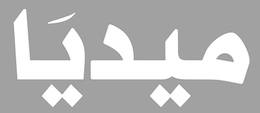 As Black Tiger, this outfit was reportedly based in Riyadh, Saudi Arabia, but as RTL Type, it appears to be in Hebron, Palestine. It was also known as Emad ISkyFalcons. On Behance, we learn that the designer is Emad Fohid.
As Black Tiger, this outfit was reportedly based in Riyadh, Saudi Arabia, but as RTL Type, it appears to be in Hebron, Palestine. It was also known as Emad ISkyFalcons. On Behance, we learn that the designer is Emad Fohid. They designed the Arabic typefaces Halime (2017), Natalie (2017), TV Sans (2016), Moscow (2016), Hajar (2016), Hilary (2016), Hattan (2015), Amal (2014, Latin / Cyrillic art deco), Lamis (2014), Saba (2014), Saba Mubarak (2014, integrated with Latin), Hajar (2014), Kufi (2014), Nicole (2013), Rajab (2014), Jody (2014), Logo (2014), Misr (2014), Egypt (2014), Free (2014), Salim (2014), Nagham (2014), Lujain (2014), Nora, Nicole, Yasmin, Joory, Rim Extra Min, Jannat Extra and Diana Extra in 2013. He also made Nicole Latin (2013) and Maram (2013, Arabic). Old Behance link. Behance link. [Google]
[More] ⦿
|
Ugaritic (metafont)
|
From Essex University, Alan M. Stanier's metafont for Ugaritic, a cuneiform alphabet (as opposed to the syllabic cuneiform of Akkadian or Hittite), as found on tablets dated from the Late Bronze Age (ca 1400 - 1200 BC) in Northern Syria and Palestine, notably in the archives at Ugarit. [Google]
[More] ⦿
|
Vladimir Tamari
|
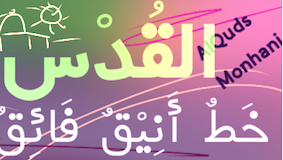 Vladimir F. Tamari (d. August 6, 2017) was born in Palestine, he spent his youth in Ramallah, and has lived in Tokyo for the past 40 years. He studied physics and art at the American University of Beirut where he met and was inspired by Buckminster Fuller (around 1960). He invented and built 3D drawing instruments. In the 1980s he joined the Optical Society of America to keep up with the field and holds U.S. patents for inventions based on his Streamline Diffraction Theory to cancel diffraction in telescopes. He wrote Beautiful Universe: Towards Reconstructing Physics From New First Principles (2005). He paints in watercolors and has designed Arabic fonts for Adobe.
Vladimir F. Tamari (d. August 6, 2017) was born in Palestine, he spent his youth in Ramallah, and has lived in Tokyo for the past 40 years. He studied physics and art at the American University of Beirut where he met and was inspired by Buckminster Fuller (around 1960). He invented and built 3D drawing instruments. In the 1980s he joined the Optical Society of America to keep up with the field and holds U.S. patents for inventions based on his Streamline Diffraction Theory to cancel diffraction in telescopes. He wrote Beautiful Universe: Towards Reconstructing Physics From New First Principles (2005). He paints in watercolors and has designed Arabic fonts for Adobe. In 2005, he made Beautiful Universe, a physics symbol font designed to illustrate his physics theory. He visited Monotype In the mid-sixties at which time he patented (in the UK in 1965) a scheme to abbreviate the number of shapes to print Arabic. He created AlQuds (Arabic) fonts for the Tasmeem Adobe InDesign add-on (in 2008). [AlQuds, meaning The Holy One, is the Palestinian Arab name for Jerusalem.] We had to wait until ca. 2015 before he published the AlQuds and AlQuds Monhani family of (modern sans) fonts in its full glory with Monotype. In a separate effort, he designed three funky font families: Maribei (Arabic), Kweeky (matching Latin, also available as 5-layer 3D font sets), Monmon (Arabic). [Google]
[More] ⦿
|
Zak Design
[Zakariya Saleh]
|
 Arabic font foundry based in Ramallah, Palestine, and run by Zakariya Saleh, a graduate of Palestine Polytechnic University. They made Osama (2013), Exo Sans (2013, a free Latin sans typeface---not to be condfused with Gama's Exo font), Asmaa (2013, Latin and Arabic), Ourtilane (2013), Oday (2013), AraSym Ramadan (2010, a family) which can be downloaded here.
Arabic font foundry based in Ramallah, Palestine, and run by Zakariya Saleh, a graduate of Palestine Polytechnic University. They made Osama (2013), Exo Sans (2013, a free Latin sans typeface---not to be condfused with Gama's Exo font), Asmaa (2013, Latin and Arabic), Ourtilane (2013), Oday (2013), AraSym Ramadan (2010, a family) which can be downloaded here. In 2013, he extrapolated the Sony Walkman logo into his Sony Walkman organic font. He also made the Arabic typefaces Bon Font, Saramah, Aqeeq, Graphici, Asri, Ink Drip, Arabic Script, Ink Stream, Alqusair, and Diana Extra, and the octagonal Latin / Arabic typeface Shohadaa. Typefaces from 2014: Ara Hala Bo She'sha, Ara Hamah 1964 B Bold, Ara Hamah 1964 R Light, Ara Hamah 1982, Ara Hamah AlFidaa, Ara Hamah AlHorra, Ara Hamah AlThawra, Ara Hamah Alislam, Ara Hamah Homs, Ara Hamah Kilania, Ara Hamah Sahet AlAssi, Ara Hamah Zanki, Ara Hamah City, Assaf, Haneen (signage script), Sally (with Sally Alzaza), Bondoq, Amal (art deco for Latin and Arabic), Lamis, Hilary, Saba, Mary (piano key typeface), Nisreen, Hajar, Kufi, Muslimah (free), Ahrar, Ghang Tachkili and Djadli Tachkili (designed by Jadli Zein Alabedeen (Algeria) and programmed by Zakaria Saleh), Al Hadari, El Maidan, Israr Syria, Etab AmMoniee, Hala, Hamah, Al Bayan, Assaf, Baghdad. Typefaces from 2015: Handmade (custom Latin/Arabic font for a Palestinian store), K24 (a corporate font for Kurdistan 24 channel), Hattan (Latin and Arabic), Nicole, Natalie, MasterFont, Naskh, Moscow (constructivist Arabic typeface). Typefaces from 2016: Joory, Twitter Headline Type, TV Sans, Corporative Sans (Latin and Arabic), Eliyaa Pro, Yasmin, Feather, Bein Sports Network typeface. Typefaces from 2017: Halimah. Typefaces from 2018: Media Pro, Maghfira. Behance link. [Google]
[More] ⦿
|
Zakariya Saleh
[Zak Design]
|
 [More] ⦿
[More] ⦿
|
Zvi Bregman
|
Hebrew wood type manufacturer in Palestine. In 1938, he published the Hebrew text Wood Type (Haddapas, Tel Aviv). [Google]
[More] ⦿
|

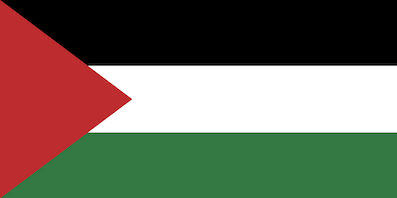
 Madrid (and before that, Lebanon)-based Arabic type designer who runs the Arab type news and blog site called Arabic Typography.
Madrid (and before that, Lebanon)-based Arabic type designer who runs the Arab type news and blog site called Arabic Typography. 
 Arabic typography web site and font foundry established in 2007 by
Arabic typography web site and font foundry established in 2007 by  [
[ As Black Tiger, this outfit was reportedly based in Riyadh, Saudi Arabia, but as RTL Type, it appears to be in Hebron, Palestine. It was also known as Emad ISkyFalcons. On Behance, we learn that the designer is Emad Fohid.
As Black Tiger, this outfit was reportedly based in Riyadh, Saudi Arabia, but as RTL Type, it appears to be in Hebron, Palestine. It was also known as Emad ISkyFalcons. On Behance, we learn that the designer is Emad Fohid.  Vladimir F. Tamari (d. August 6, 2017) was born in Palestine, he spent his youth in Ramallah, and has lived in Tokyo for the past 40 years. He studied physics and art at the American University of Beirut where he met and was inspired by Buckminster Fuller (around 1960). He invented and built 3D drawing instruments. In the 1980s he joined the Optical Society of America to keep up with the field and holds U.S. patents for inventions based on his Streamline Diffraction Theory to cancel diffraction in telescopes. He
Vladimir F. Tamari (d. August 6, 2017) was born in Palestine, he spent his youth in Ramallah, and has lived in Tokyo for the past 40 years. He studied physics and art at the American University of Beirut where he met and was inspired by Buckminster Fuller (around 1960). He invented and built 3D drawing instruments. In the 1980s he joined the Optical Society of America to keep up with the field and holds U.S. patents for inventions based on his Streamline Diffraction Theory to cancel diffraction in telescopes. He  Arabic font foundry based in Ramallah, Palestine, and run by Zakariya Saleh, a graduate of Palestine Polytechnic University. They made Osama (2013),
Arabic font foundry based in Ramallah, Palestine, and run by Zakariya Saleh, a graduate of Palestine Polytechnic University. They made Osama (2013),  [
[